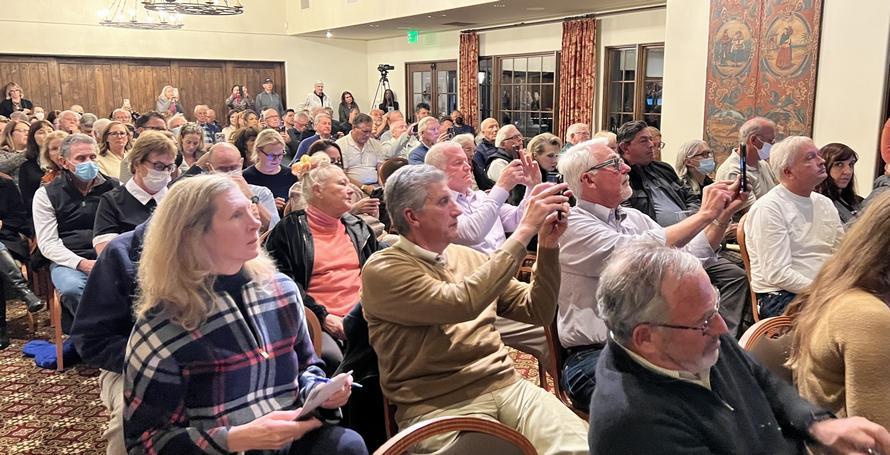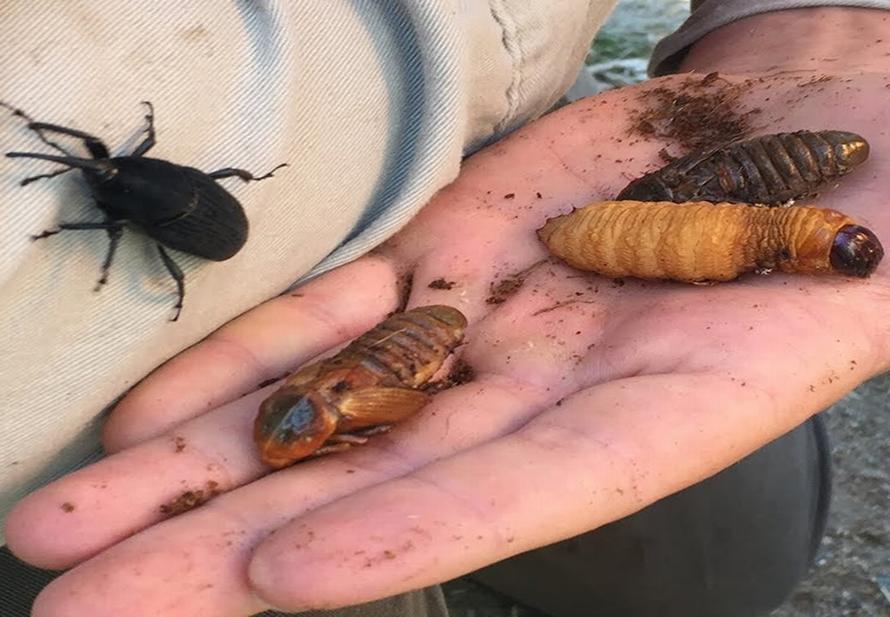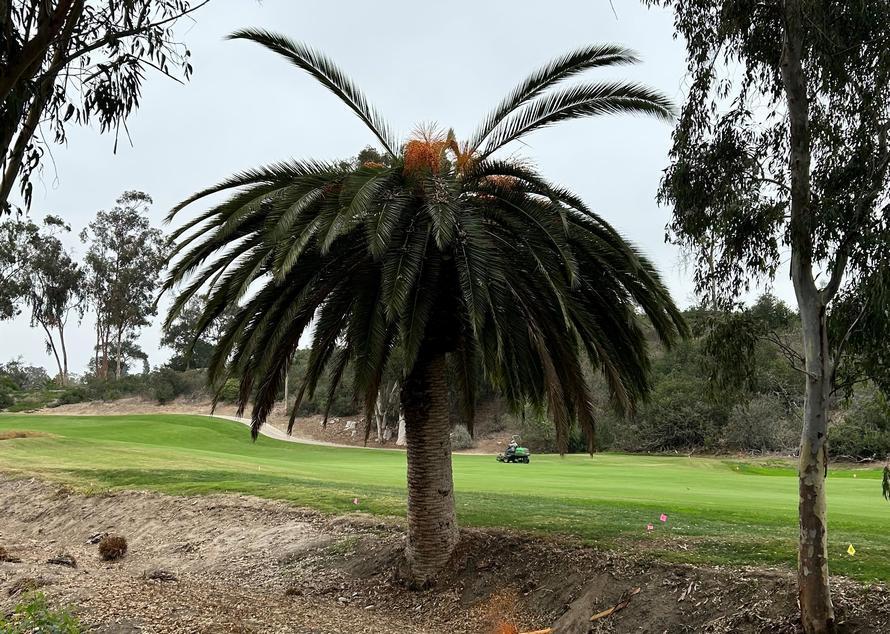Palm Weevil Expert Proposes Treatment Plan
Palm Weevil Expert Proposes Treatment Plan
 A community forum on palm weevils was held January 25, 2023, at the Ranch Clubhouse to address the increasing weevil impact on palm trees in Rancho Santa Fe and Southern California. About 150 guests attended the meeting hosted by the RSF Association and Forest Health & Preservation Committee.
A community forum on palm weevils was held January 25, 2023, at the Ranch Clubhouse to address the increasing weevil impact on palm trees in Rancho Santa Fe and Southern California. About 150 guests attended the meeting hosted by the RSF Association and Forest Health & Preservation Committee.
Palm weevil expert Dr. Mark Hoddle said, "Instead of spraying palm trees, injecting them with insecticide, or drenching the soil with insecticides, what we want to do is to use the weevil's biology and behavior against itself." Hoddle is a professor of Extension in Biological Control in the Department of Entomology at UC Riverside. He presented his trail-blazing on palm weevils and his newly developed "Attract and Kill" pheromone trapping research project.

Dr. Hoddle provided information on the biology of the insect, how it attacks and migrates. The South American palm weevil originates from Mexico, Central America and the Caribbean, and is estimated to have arrived in Southern California around 2010 through Tijuana, Mexico. Cases have been on the rise in Rancho Santa Fe as it made its journey north from the Sweetwater Reservoir in Bonita, CA. Weevils have long snouts that enable them to drill holes into palm trees where they lay eggs. Larvae hatch out of eggs and eat tunnels through the flesh of palms. They spin cocoons out of tree fibers they cannot ingest and eventually metamorphose into beetles. Mature weevils can fly an average of 25 miles per day and attack many species of palms including Canary Island Date palms, Guadalupe palms, Bismarkia, Fan palms and other ornamental species.
The presentation included an overview of what measures that may be taken to address the pest. Dr. Hoddle has been monitoring palm population areas and has documented palm mortality rates ranging from 45% up to 70% in some areas. "You are likely to see something similar here in Rancho Santa Fe," Hoddle advised. He went on to say that "the best way to protect these palms is through applications of insecticides" through repeated drenching of the crown or soil, and/or injecting the trunk. Dr. Hoddle advised that these treatments be applied every three to four months and may be rigged up with permanent pumps on the sides of palms. Dr. Hoddle's data also reveals that "80% of weevils are trapped between April and October" and subsequently advises palm owners to only prune between November and March in order to reduce the tree's vulnerability. His research has shown that recovery may be possible with a consistent and interminable treatment plan.

Another more economical and environmentally friendly method of reducing weevils is through cone pitfall traps. Used with non-toxic aggregation pheromones, they are the most effective trap style and are available online, and owners may concoct their own baits out of aggregation pheromones mixed with dates, water, and baker's yeast. The aggregation pheromones should be changed once a month, and the other mixture every two weeks. Dr. Hoddle does not suggest placing these traps near palm trees or in direct sunlight and recommends at least 10 traps per hectare of land.
Dr. Hoddle has been awarded grant funding by the California Department of Pesticides Regulation to implement an experimental program addressing the palm weevil infestation he calls "Fatal Attraction." Part of this research and treatment program would include installing 1,400 aggregation pheromone dollop traps with insecticides throughout Rancho Santa Fe Association-managed land including additional traps in surrounding communities to attract and kill palm weevils. The project would include monitoring of three areas with traps, one area for control, and then tracking rates of palm mortality and palm weevil counts. The proposed insecticide, a pyrethroid derived from the chrysanthemum flower, is moderately toxic to humans in very high concentrations. It can also be toxic to all insects, fish and aquatic invertebrates. However, since it does not contaminate nectar or pollen in flowers, won't be near water, and is contained in a dollop trap rather than sprayed or poured on palms, it is unlikely to affect these populations. Dr. Hoddle's research project will be presented to the Board of Directors on Thursday, February 2, 2023, to seek permission to implement this study in Rancho Santa Fe.

For more information on Dr. Hoddle or palm weevils, visit biocontrol.ucr.edu/south-american-palm-weevil. If you suspect a palm weevil infestation on your property, contact RSF Association's Parks and Recreation Department at (858) 756-4652.